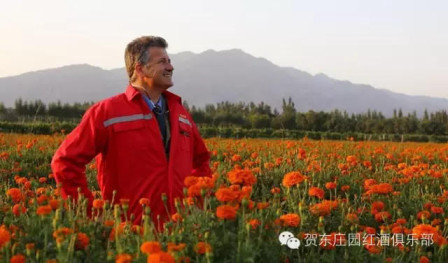Gianpaolo Paglia of Italy is one of 48 participants in the two-year Ningxia Winemakers Challenge (NWC) that started in September of 2015 and that pairs foreign winemakers with local wineries. Paglia, with a PhD in plant biotechnology, works with a winery he started in Tuscany 17 years ago and is in the second year of the Masters of Wine program.
What was your travel route to Ningxia?
I came from London, direct to Beijing, then flew to Yinchuan after a two-hour wait. Quite a good pattern compared to some candidates.
Winery partners range from big producers to boutique wineries, the accommodations are everywhere from the capital of Yinchuan to more than 100 km away, and the equipment varies. Could you tell us a bit about your situation?
My winery is Chateau Hedong. This winery has nearly 100 hectares of vineyards, almost all of them inside a walled estate. We are at the northernmost part of Ningxia, with quite different climatic and soil situations.
The winery is well-organised and just received some new equipment from France, although it was too late for my harvest. I wish we had more communication aids, as most people did not speak any foreign language, but in the end we managed to do our job.
Each winemaker had three hectares of grapes. How was your fruit quality?
My plot was quite good, but I really made an effort to both explain the type of fruit I wanted to harvest and to actually enforce this by staying in the vineyard alongside the pickers. The result was healthy fruit of good quality.
What is the biggest short-term and the biggest long-term challenge for Ningxia?
A short-term challenge is the need for some good enologists in the wineries, as many places do not have a professional staff member but instead rely on visiting winemakers. Visiting winemakers are fine, but you need to build in-house skills if you really want to progress.
The long-term challenge is related to the vineyards. A lot of resources are used in the wineries but, generally speaking, there are not enough in the vineyards. Pruning methods, trellising, water and nutrient management, pest and disease management, the use of sanitary plant material–all of these factors need to be really well-assessed with reference to the peculiar climatic and soil environment of this region. How to prune, in a healthy and sustainable way, plants that need to be buried just a few weeks after harvest [to protect them against the cold and dry winters] should be one of the main concerns, including in relation to trunk diseases and viruses.
There is also a stylistic issue. Too many wines are made with an eye to a style that conveys power and concentration, with the same two or three varieties, like Cabernet Sauvignon, Syrah and Chardonnay. A bit more experimentation and adventurousness could be envisaged, with new varieties and styles that might even result in something more suitable for the region.
Ningxia is well-known for its noodles. How do they compare to Italian ones?
I love the local food, really love it, and I miss it a lot. Noodles are maybe better the Italian way, but the rest of the food, oh boy, was it good!
Click here for more Ningxia Winemakers Challenge interviews. And if you’d like to get the free Grape Wall e-newsletter, sign up below.
Grape Wall has no sponsors of advertisers: if you find the content and projects like World Marselan Day worthwhile, please help cover the costs via PayPal, WeChat or Alipay.
Sign up for the free Grape Wall newsletter here. Follow Grape Wall on LinkedIn, Instagram, Facebook and Twitter. And contact Grape Wall via grapewallofchina (at) gmail.com.
